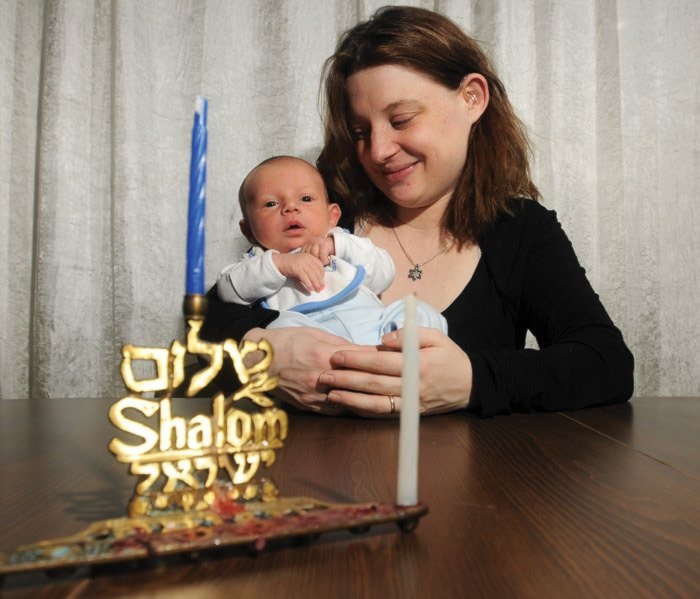Christmas can be a lonely time for the Jewish community in Maple Ridge and Pitt Meadows. Inundated by a culture not their own, it can be a struggle to retain their own customs.
While census data puts the number of Jews in the Fraser Valley at close to 30,000, there are only 500 or so in Maple Ridge and Pitt Meadows.
With the closest synagogue located in Coquitlam, it can be difficult for Jewish families to connect with each other.
Emily Tepper, a Maple Ridge mother of three, has helped to found a group for Jewish children living in Maple Ridge and Pitt Meadows, allowing them to get together and connect and learn about their culture, their religion, and their history.
The group includes about a half dozen Jewish families stretching from Pitt Meadows to Whonnock.
The group is a way for the children to learn a bit of Hebrew, and to experience their culture, says Tepper.
“It can be difficult, especially this time of year,” she says.
This month the group celebrated the Jewish holiday of Hanukkah. But with more than half the families involved being interfaith families, the celebrations often focus on the cultural heritage of the Jewish people, rather than religion.
“A lot of Jews aren’t necessarily religious,” explains Tepper. “Most of us are culturally or spiritually Jewish.”
Tepper grew up in Dawson Creek, where her’s was one of the only Jewish families in town.
As a result, many of the children Tepper grew up with were ignorant of her culture.
“I remember wearing a star of David to school,” she says, “and one of the kids thought that it was a pentagram and that I worshipped Satan.”
Tepper’s mother always told her and her two brothers that it was a good deed for them to explain their faith and their culture to others.
“Living in Maple Ridge, we have to be ambassadors,” she says.
Because Hanukkah (Dec. 20-27) lands in the same month as Christmas, it’s often assumed that it too is the most significant holiday of the year for the Jewish religion, but that is not so.
Rosh Hashanah and Yom Kippur, which usually occur in September or October, are by far the most important holidays, says Tepper.
When Tepper visited Israel in her teens, she was surprised to find that Hanukkah was hardly celebrated at all.
“In North America, it’s far more popular, that way the children feel included in the holiday season,” she says.
As a result, some Christmas traditions have become incorporated into Hanukkah celebrations, namely gift-giving.
The history of Hanukkah dates back to 167 BC, when Antiochus, a successor to empire of Alexander the Great, outlawed the Jewish religion in Judea, the site of present-day Israel.
Jews led by Judah Maccabee revolted against the emperor, and reclaimed the Holy Temple in Jerusalem, which housed the Ark of the Covenant, believed to contain the two stone tablets upon which the Ten Commandments were written.
After Moses received the Ten Commandments from God, he instructed those who were to protect the Ark to always keep a lamp burning in it’s presence. This eternal light, called a ner tamid, was to burn continually as a symbol of God’s presence.
By the time the Jews reclaimed the temple, there was only enough olive oil on hand to keep the eternal flame lit for one day. However, it would take at least eight days to resupply the oil.
In what followers of Judaism believe is a miracle, the lamp remained lit for eight days until the oil arrived.
This miracle is commemorated over eight days, beginning on the 25th day of Kislev, according to the Hebrew calendar, which may fall anytime from late November to late December.
To celebrate the miracle of the oil, traditionally foods fried in oil are served, such as latkes, a type of potato pancake, and Sufganiyot, a Jewish jelly donut.
“Like all Jewish holidays, Hanukkah seems to follow the pattern of, they tried to kill us, we survived, now let’s eat,” Tepper says.
